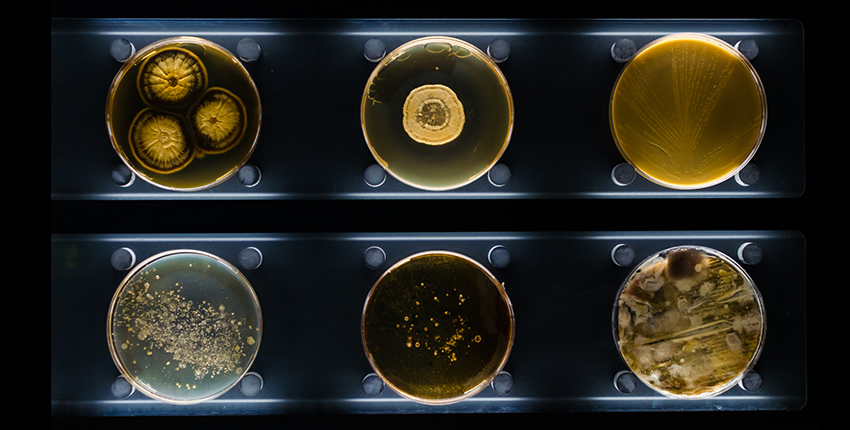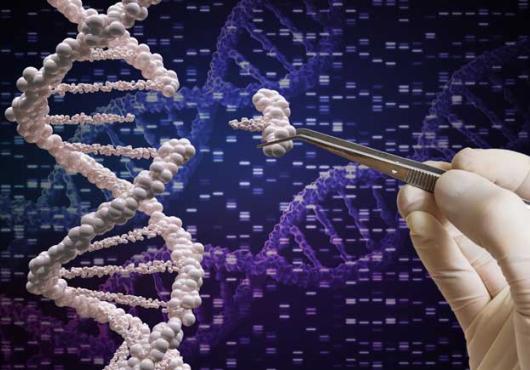
Image: Anna Kazantseva / Pond5
From bacteria-made insulin that obviates the use of animal pancreases to a better understanding of infectious diseases and improved treatments, genetic engineering of bacteria has redefined modern medicine. Yet, serious limitations remain that hamper progress in numerous other areas.
A decades-old bacterial engineering technique called recombineering (recombination-mediated genetic engineering) allows scientists to scarlessly swap pieces of DNA of their choosing for regions of the bacterial genome. But this valuable and versatile approach has remained woefully underused because it has been limited mainly to Escherichia coli—the lab rat of the bacterial world—and to a handful of other bacterial species.
Now a new genetic engineering method developed by investigators in the Blavatnik Institute at Harvard Medical School and the Biological Research Center in Szeged, Hungary, promises to super-charge recombineering and open the bacterial world at large to this underutilized approach.
A report detailing the team’s technique is published May 28 in PNAS.
The investigators have developed a high-throughput screening method to look for the most efficient proteins that serve as the engines of recombineering. Such proteins, known as SSAPs, reside within phages—viruses that infect bacteria.
Applying the new method, which enables the screening of more than two hundred SSAPs, the researchers identified two proteins that appear to be particularly promising.
One of them doubled the efficiency of single-spot edits of the bacterial genome. It also improved tenfold the ability to perform multiplex editing—making multiple edits genome-wide at the same time. The other one enabled efficient recombineering in the human pathogen Pseudomonas aeruginosa, a frequent cause of life-threatening, hospital-acquired infections, for which there has long been a dearth of good genetic tools.
“Recombineering will be a very critical tool that will augment our DNA writing and editing capabilities in the future, and this is an important step in improving the efficiency and reach of the technology,” said study first author Timothy Wannier, research associate in genetics in the lab of George Church, the Robert Winthrop Professor of Genetics at HMS.
Previous genetic engineering methods, including CRISPR Cas9-based gene-editing, have been ill-suited to bacteria because these methods involve “cutting and pasting” DNA, the researchers said. This is because, unlike multicellular organisms, bacteria lack the machinery to repair double-stranded DNA breaks efficiently and precisely, thus DNA cutting can profoundly interfere with the stability of the bacterial genome, Wannier said. The advantage of recombineering is that it works without cutting DNA.
Instead, recombineering involves sneaking edits into the genome during bacterial reproduction. Bacteria reproduce by splitting in two. During that process, one strand of their double-stranded, circular DNA chromosomes goes to each daughter cell, along with a new second strand that grows during the early stages of fission. The raw materials for recombineering are short, approximately 90 base strands of DNA that are made to order. Each strand is identical to a sequence in the genome, except for edits in the strand’s center. These short strands slip into place as the second strands of the daughter cells grow, efficiently incorporating the edits into their genomes.
Among many possible uses, edits might be designed to interfere with a gene in order to pinpoint its function or, alternatively, to improve production of a valuable bacterial product. SSAPs mediate attachment and proper placement of the short strand within the growing new half of the daughter chromosome.
Recombineering might enable the substitution of a naturally occurring bacterial amino acid—the building blocks of proteins—with an artificial one. Among other things, doing so could enable the use of bacteria for environmental cleanup of oil spills or other contaminants, that depend on these artificial amino acids to survive, meaning that the modified bacteria could be easily annihilated once the work is done to avoid the risks of releasing engineered microbes into the environment, Wannier said.
“The bacteria would require artificial amino acid supplements to survive, meaning that they are preprogrammed to perish without the artificial feed stock,” Wannier added.
A version of recombineering, called multiplex automated genome engineering (MAGE), could greatly boost the benefits of the technique. The particular advantage of MAGE is its ability to make multiple edits throughout the genome in one fell swoop.
MAGE could lead to progress in projects requiring reengineering of entire metabolic pathways, said John Aach, lecturer in genetics at HMS. Case in point, Aach added, are large-scale attempts to engineer microbes to turn wood waste into liquid fuels.
“Many investigator-years’ effort in that quest have made great progress, even if they have not yet produced market-competitive products,” he said.
Such endeavors require testing many combinations of edits, Aach said.
“We have found that using MAGE with a library of DNA sequences is a very good way of finding the combinations that optimize pathways.”
A more recent descendant of recombineering, named directed evolution with random genomic mutations (DIvERGE), promises benefits in the fight against infectious diseases and could open new avenues for tackling antibiotic resistance.
By introducing random mutations into the genome, DIvERGE can speed up natural bacterial evolution. This helps researchers quickly uncover changes that could arise naturally in harmful bacteria that would make them resistant to antibiotic treatment, explained Akos Nyerges, research fellow in genetics in Church’s lab at HMSs, previously at the Biological Research Center of the Hungarian Academy of Sciences.
“Improvements in recombineering will allow researchers to more quickly test how bacterial populations can gain resistance to new antibacterial drugs, helping researchers to identify less resistance-prone antibiotics,” Nyerges said.
Recombineering will likely usher in a whole new world of applications that would be hard to foresee at this juncture, the researchers said.
“The new method greatly improves our ability to modify bacteria,” Wannier said. “If we could modify a letter here and there in the past, the new approach is akin to editing words all over a book and doing so opens up the scientific imagination in a way that was not previously possible.”
Church was a principal investigator on the study. Co-investigators on the research included Helene Kuchwara, Márton Czikkely, Dávid Balogh, Gabriel Filsinger, Nathaniel Borders, Christopher Gregg, Marc Lajoie, Xavier Rios, and Csaba Pál.
The work was funded by the U.S. Department of Energy (DE-FG02-02ER63445), the European Research Council (H2020-ERC-2014-CoG 648364), GINOP (MolMedEx TUMORDNS) GINOP-2.3.2-15-2016-00020, GINOP (EVOMER) GINOP-2.3.2-15-2016-00014; Momentum Program of the Hungarian Academy of Sciences, an EMBO Long-Term Fellowship, the Szeged Scientists Academy under the sponsorship of the Hungarian Ministry of Human Capacities (EMMI: 13725-2/2018/INTFIN), by the UNKP-18-2 New the National Excellence Program of the Hungarian Ministry of Human Capacities and UNKP 10-2, and the New National Excellence Program of the Hungarian Ministry for Innovation and Technology.
Relevant disclosures:
Church has related financial interests in enEvolv, GRO Biosciences and 64-x; with some coauthors; and has submitted a patent application relating to pieces of this work (WO2017184227A2). Wannier, Church and another coauthor have submitted a patent application related to the improved SSAP variants referenced here. Nyerges is listed as an inventor on a patent application related to DIvERGE.





